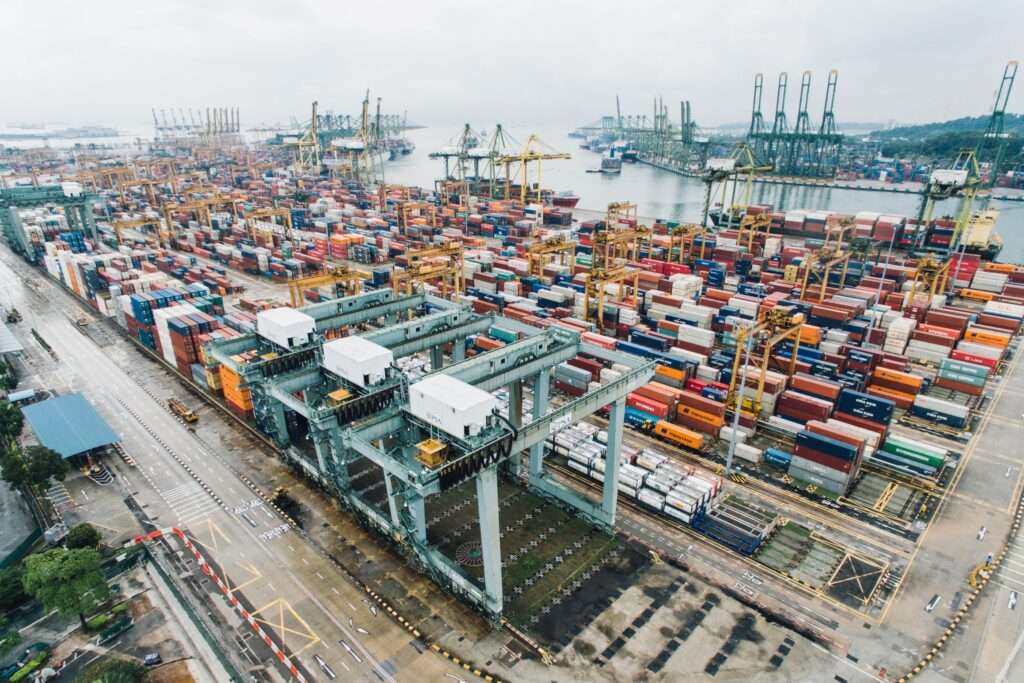Living off the grid has become an increasingly popular lifestyle choice for those seeking independence and sustainability. However, one challenge that often arises in this unique living arrangement is the issue of dampness in shipping containers, which are commonly repurposed as living spaces. In this article, I will explore various strategies and techniques to effectively prevent and control dampness in a shipping container, ensuring a comfortable and healthy environment for off grid enthusiasts.

Understanding Dampness in Shipping Containers
Shipping containers are widely used for various purposes, ranging from storage to transportation of goods. However, one common issue that plagues these containers is dampness. Dampness in shipping containers refers to the presence of excess moisture or water, which can lead to a variety of problems if left unaddressed. To effectively tackle this issue, it is crucial to understand the causes of dampness, the effects it can have on shipping containers, and the importance of addressing this problem.
Causes of Dampness in Shipping Containers
There are several factors that contribute to the dampness in shipping containers. These factors include:
1. Condensation
Condensation occurs when warm air comes into contact with a cold surface, causing the moisture in the air to condense and form water droplets. In shipping containers, condensation often occurs due to fluctuations in temperature and humidity levels.
2. Poor Ventilation
Inadequate ventilation is another major cause of dampness in shipping containers. Insufficient airflow prevents the escape of moisture and allows it to accumulate inside the container, leading to dampness and increased humidity levels.
3. Leaks and Water Ingress
Shipping containers are exposed to various weather conditions during transportation and storage. If there are any leaks or gaps in the container structure, water can enter and cause dampness. These leaks may occur due to poor maintenance, damage to the container, or improper sealing.
4. Moisture in Goods
The goods stored or transported in shipping containers can contribute to the dampness issue. If the goods are not adequately protected or packaged, they may release moisture into the container environment, thereby increasing the overall humidity levels.
Effects of Dampness on Shipping Containers
Dampness in shipping containers can have significant consequences if not addressed promptly. The effects of dampness include:
1. Structural Damage
Excessive moisture can damage the structural integrity of shipping containers. The presence of water can weaken the container’s walls, floors, and ceilings, leading to deterioration and potential safety hazards.
2. Corrosion and Rust
Moisture accelerates the process of corrosion and rust formation on the metal components of shipping containers. Corroded surfaces not only reduce the lifespan of the container but also compromise its strength and stability.
3. Mold and Mildew
One of the most prevalent issues caused by dampness is the growth of mold and mildew. These fungal organisms thrive in moist environments and can quickly spread within the container. Mold and mildew not only cause an unpleasant odor but can also pose health risks, especially to individuals with respiratory conditions or allergies.
4. Odor and Health Risks
Dampness often leads to unpleasant odors within shipping containers. The stagnant water and increased humidity create a breeding ground for bacteria and fungi, resulting in foul smells. Moreover, the presence of mold and mildew can release airborne spores that may cause respiratory problems and other health issues.
Importance of Addressing Dampness
Addressing dampness in shipping containers is of utmost importance for several reasons, including:
1. Protection of Goods
Shipping containers are commonly used for the storage and transportation of valuable goods. Dampness poses a significant risk to the integrity and quality of these goods. By addressing dampness, the potential damage caused to the goods can be minimized, ensuring their safekeeping and preventing financial losses.
2. Safety and Structural Integrity
Ensuring the structural integrity of shipping containers is crucial for the safety of individuals and the longevity of the containers themselves. Dampness can weaken the structural components, making them prone to collapse or other accidents. By addressing dampness, the risk of such incidents can be significantly reduced.
3. Preventing Health Issues
The presence of mold, mildew, and other microorganisms in damp shipping containers can lead to various health problems. These health issues can range from respiratory problems to allergic reactions. By addressing dampness, the risk of health complications for individuals who come into contact with these containers can be mitigated.
4. Enhancing Container Lifespan
Shipping containers are a long-term investment for individuals, businesses, and organizations. Regular maintenance and addressing dampness can significantly extend the lifespan of these containers. By implementing suitable preventive measures and promptly addressing dampness issues, the overall durability and functionality of the containers can be improved, resulting in long-term cost savings.
Preventive Measures for Dampness Control
To effectively control and prevent dampness in shipping containers, various preventive measures can be implemented. These measures include:
Choosing the Right Container
Selecting a suitable container is the first step towards dampness control. Consideration should be given to the container material, previous usage and condition, as well as the age and quality of the container. Opting for containers made of high-quality materials and ensuring their proper maintenance enhances their resistance to dampness.
Proper Site Preparation
Before placing a shipping container, proper site preparation is crucial. This includes ensuring a level and well-drained surface to minimize the risk of water accumulation beneath the container. A suitable foundation, such as concrete or gravel, can help prevent moisture from seeping into the container.
Insulation and Ventilation
Insulating the container can regulate internal temperatures and minimize the occurrence of condensation. Proper ventilation is also essential to allow airflow and the escape of moisture. This can be achieved through the installation of vents or the use of fans to improve air circulation within the container.
Desiccant Packs
Desiccant packs are a practical solution for reducing moisture levels inside shipping containers. These packs contain moisture-absorbing materials that help to maintain a dry environment. Placing desiccant packs strategically within the container can significantly reduce the risk of dampness.
Sealing and Waterproofing
Proper sealing and waterproofing play a vital role in preventing water ingress and leaks. Regularly inspecting and repairing any damage to the container’s structure, including the walls, roof, and doors, minimizes the risk of water infiltration and subsequent dampness.
Regular Cleaning and Maintenance
Regular cleaning and maintenance are essential for the long-term control of dampness in shipping containers. Removing any accumulated dirt, debris, or signs of mold not only improves the container’s aesthetic appearance but also reduces the risk of further moisture retention and the growth of microorganisms.

Addressing Dampness Issues
Despite preventative measures, dampness issues may still arise in shipping containers. It is crucial to promptly address these issues with appropriate solutions. The steps involved in addressing dampness issues include:
Identifying Signs of Dampness
It is important to be vigilant and identify the signs of dampness in shipping containers. These signs may include water stains, mold growth, musty odors, or excessive condensation. Early detection allows for timely intervention and prevents further damage.
Removing and Replacing Affected Materials
If dampness has caused structural damage or compromised certain materials within the container, it is vital to remove and replace these affected materials. This helps to prevent further deterioration and ensures the integrity of the container is restored.
Applying Anti-Damp Coatings
Anti-damp coatings can provide an additional layer of protection against moisture and dampness. These coatings are designed to repel water and create a barrier that prevents water from seeping into the container. Applying such coatings to susceptible areas can effectively reduce the risk of dampness.
Dehumidification Solutions
In cases where significant moisture levels persist, the use of dehumidification solutions may be necessary. Dehumidifiers help to extract excess moisture from the air within the container, reducing humidity levels and preventing further dampness.
Professional Damp Proofing Services
For complex or severe dampness issues, seeking professional damp proofing services is advisable. These professionals possess the expertise, experience, and specialized equipment required to effectively assess and address dampness in shipping containers. Inspection, assessment, and the application of appropriate damp proofing methods are key steps in resolving persistent dampness problems.
In conclusion, dampness in shipping containers is a prevalent issue that can have detrimental effects on the containers themselves, the goods stored within, and even the health of individuals. Understanding the causes of dampness, its effects, and the importance of addressing this issue is crucial for ensuring the safety, longevity, and functionality of shipping containers. Implementing preventive measures and promptly addressing dampness issues through appropriate strategies and solutions can help maintain a dry and optimal environment within shipping containers.




